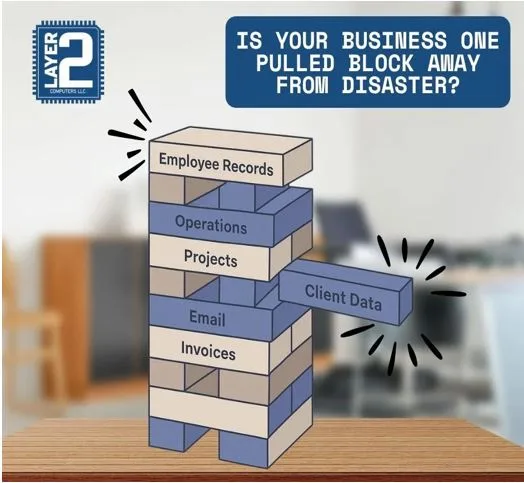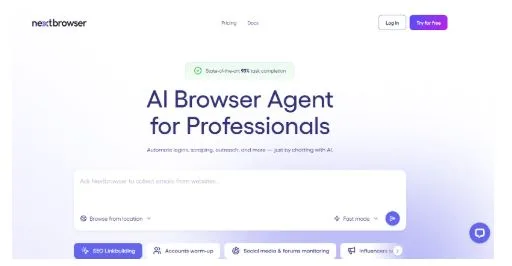How to Pick the Right Web Development Tech Stack: Key Factors Explained
A quite crucial decision that can hamper your company’s digital success is choosing the right web development tech stack. Everything from development pace to long-term maintenance expenses is impacted by this decision, but many firms make snap selections without fully comprehending the ramifications.
The set of databases, tools, frameworks, and programming languages used to create your web application is known as a tech stack. Errors result in missed market opportunities, performance problems, and expensive rewrites. When done correctly, it speeds up development, lowers expenses, and sets up your company for expansion.
Project Requirements Drive Technology Choices
The choice of technology should be determined by the particular requirements of your project, not by developer preferences or market trends. Start by outlining the essential features, anticipated user volume, and performance needs of your program.
Performance Requirements Simple marketing websites require different solutions than high-traffic applications that demand real-time functionalities. Think about using Node.js with WebSocket support when creating a chat application or live trading platform. Python with Django or PHP with Laravel offer sufficient performance and quicker development cycles for content-heavy websites with moderate traffic.
Scalability Expectations Make growth a priority right away. Cloud-native architectures that leverage containerized technologies like Docker with Kubernetes orchestration are advantageous for applications that anticipate significant user growth. Conventional monolithic methods are effective when traffic patterns are predictable, but they become costly to grow horizontally.
Integration Needs These days, applications are rarely isolated. Examine your third-party services, current systems, and upcoming integration needs. If your business makes substantial use of Microsoft Azure,.NET Core offers smooth integration. Serverless solutions with Lambda functions may be preferred by businesses with AWS infrastructure.
Development Timeline and Budget Constraints
The choice of tech stack is greatly influenced by financial and schedule limitations. Web development companies aim to choose the best tech stack that balances speed-to-market with long-term sustainability.
Rapid Prototyping vs. Long-Term Development Frameworks For MVP development or proof-of-concept projects, frameworks with a lot of pre-built components should be prioritized. Front-end development is accelerated by using React with Material-UI or Vue.js with Vuetify. Ruby on Rails is perfect for rapid backend prototyping because of its convention-over-configuration technique.
Development Team Costs Salary ranges for different technology vary. Generally speaking, JavaScript developers are less expensive than specialized Scala or Erlang developers. When weighing your options, take hiring challenges and training expenses into account. Recruitment difficulties are lessened by the greater talent pools of well-known technologies like React, Node.js, and Python.
Long-term Maintenance After initial development, take maintenance expenditures into account. The building of technical debt is lessened by frameworks with vibrant communities and frequent updates. React’s flexibility necessitates more architectural choices but enables more customization, whereas Angular’s rigid methodology and frequent release cycle give predictable maintenance patterns.
Team Expertise and Learning Curve
The success of your technology decision is greatly influenced by the current skill set of your development team. There is needless risk and delay when new technology are forced onto people.
Skill Assessment Conduct a fair evaluation of your team’s present capabilities. Leveraging the MEAN stack (MongoDB, Express.js, Angular, Node.js) or MERN stack (MongoDB, Express.js, React, Node.js) allows full-stack development with a single language and utilizes existing skills if your developers are proficient in JavaScript.
Training Investment Determine the time and expense needed for new technology training. Gaining expertise with contemporary JavaScript frameworks usually takes two to three months, whereas learning new programming languages takes six to twelve months. Project schedules should take these timelines into account.
Knowledge Transfer Think about knowledge exchange and team sustainability. Knowledge sharing among team members is facilitated by technologies with extensive documentation and sizable communities. Python is perfect for teams with different levels of experience because of its easily understood syntax and comprehensive documentation.
Scalability and Performance Considerations
Both technological and business expansion requirements are included in scalability. The appropriate decision takes into account growing team sizes, feature complexity, and user loads.
Horizontal vs. Vertical Scaling Recognize your scaling preferences in advance. Container-based microservices architectures facilitate horizontal growth but add complexity. Monolithic apps reach performance ceilings more quickly yet scale vertically and are easier to implement.
Database Selection Impact The entire application design is impacted by the database selection. For transactional applications, relational databases such as PostgreSQL offer sophisticated querying features and ACID compliance. Applications with changing data structures or content management systems can benefit from the flexibility provided by NoSQL databases like MongoDB.
Caching and Performance Optimization Think about integrated performance optimization tools. For React applications, Next.js offers server-side rendering and static site creation, which speeds up initial load times. Database optimization techniques and caching mechanisms are integrated into Laravel.
Security and Compliance Requirements
Different businesses and application types have quite different security considerations. Technology choices are impacted by stringent compliance standards for applications in financial services, healthcare, and e-commerce.
Framework Security Features When selecting solutions for the web development stack, consider integrated security elements. Strong defense against common flaws like SQL injection, cross-site scripting, and cross-site request forgery is included into Django. Enterprise applications can benefit from the extensive security modules offered by Spring Boot.
Compliance Standards The choice of technology is influenced by industry rules. Careful data handling skills are necessary for GDPR compliance. For healthcare apps, HIPAA compliance necessitates particular audit trail and encryption features. While some frameworks require bespoke implementation, others offer capabilities that are ready for compliance.
Update and Patch Management Think about ongoing security upkeep. Vulnerability exposure is decreased by frameworks with active security teams and frequent patch releases. Examine the technology’s history of quickly resolving security vulnerabilities.
Technology Ecosystem and Community Support
Strong ecosystems use community resources, libraries, and technologies to speed up development. Mature ecosystems solve common problems and shorten development times.
Library and Package Availability Examine the third-party libraries that are available for your particular requirements. While Python’s PyPI offers a wealth of alternatives for web development, machine learning, and data processing, NPM for JavaScript offers more than a million packages. Custom development may be necessary for smaller ecosystems that lack specialized solutions.
Community Size and Activity Active communities facilitate ongoing improvement and quicker problem solving. Ecosystem health is shown by Stack Overflow inquiries, GitHub activity, and conference attendance. Technologies with dwindling user bases run the danger of becoming obsolete and receiving less support.
Documentation Quality Thorough documentation lowers onboarding expenses and development time. Faster team scaling is made possible by React’s comprehensive documentation and tutorial ecosystem. Before making a choice, evaluate the documentation quality of various possible technologies.
Future-Proofing Your Technology Investment
The technology you select affects your application’s lifetime and evolution potential. Consider both immediate need and long-term viability.
Technology Adoption Trends Observe industry adoption trends without following them entirely. Long-term stability is usually improved by technologies that are being used by businesses. Both Stack Overflow’s and GitHub’s annual developer surveys offer insightful information about adoption.
Vendor Lock-in Risks Analyze reliance on particular platforms or vendors. Although cloud provider services are convenient, switching costs are incurred. Although they are more flexible, open-source options necessitate greater infrastructure administration.
Migration Path Planning Start by planning possible migration routes. Monolithic programs necessitate total rewrites, whereas microservices designs allow for incremental technological migrations. Make sure your architecture can adapt to changes in the future.
Making the Final Decision
Selecting a tech stack successfully necessitates methodical analysis rather than hunches. Make a weighted scoring system that assesses the significance of each element in your particular circumstance.
Record your assumptions and decision-making procedure. Rapid technological change is aided by recorded reasoning in future assessments and possible migration choices.
Keep in mind that there are rarely flawless answers. The ideal technology selection strikes a compromise between a number of conflicting considerations and fits well with your business’s capabilities, timeframe, and expansion goals. Pay attention to solutions that address your current needs while offering feasible avenues for future requirements to be accommodated.
Your web development tech stack decision shapes your digital product’s success trajectory. Invest time in thorough evaluation now to avoid costly corrections later. The right choice accelerates development, reduces maintenance overhead, and positions your business for sustainable growth in an increasingly digital marketplace.





